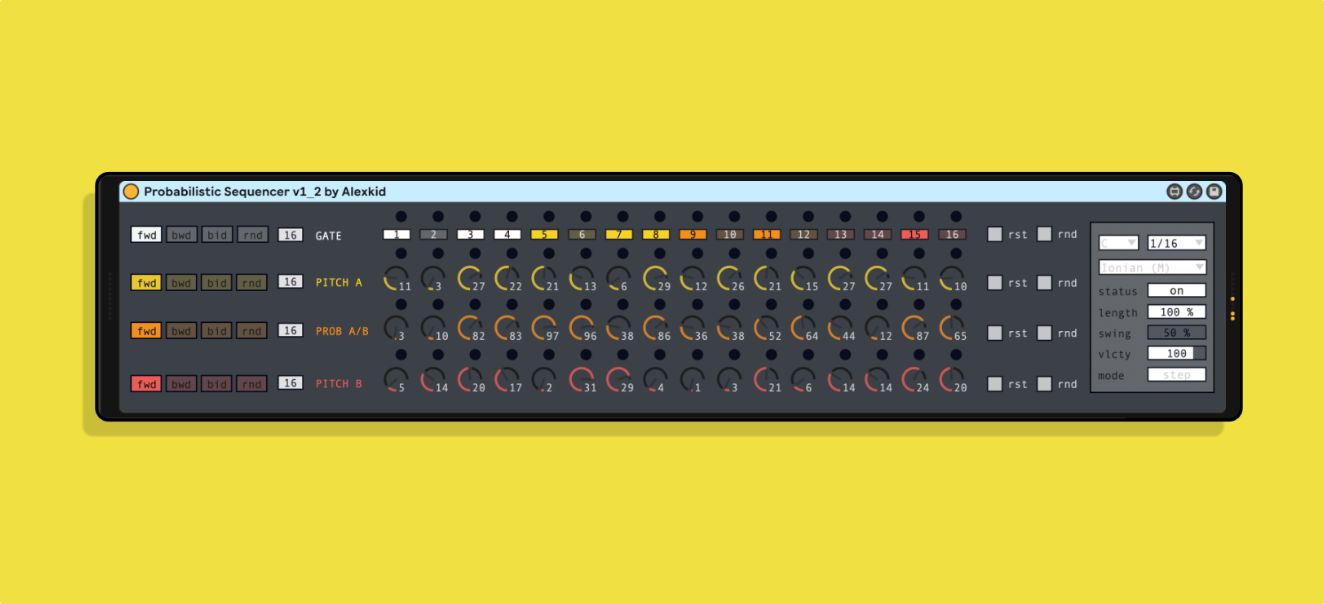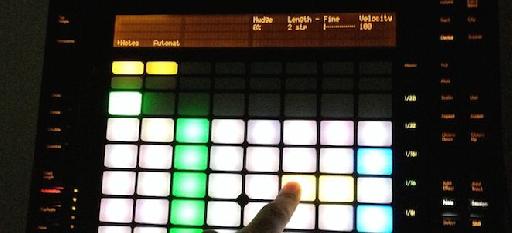

- #Favorite step sequencer ableton install#
- #Favorite step sequencer ableton upgrade#
- #Favorite step sequencer ableton Activator#
- #Favorite step sequencer ableton software#


These individuals are responsible for the melody, the harmony, the rhythm, and their timbral aspects.Ĭompare this to a band where you have individuals taking on each one of these rolls. Switching through different patterns on the fly can lead to extremely dynamic compositions on stage and in the studio if you want to make sure patterns don't switch until the next downbeat, engage the Quantize button just beneath the Pattern selection dial.One thing that distinguishes electronic music from other genres of music is that it’s a full-spectrum composition that’s usually done by one, or two people. Using the three buttons in the bottom left below it (Pic 12 – bottom left), we can copy any pattern and then paste it to any of the remaining pattern slots as selected by the dial above if you want to start again from scratch, just use the Init button to reset your currently selected pattern. Thankfully, Mono Sequencer can store up to 12 different pattern variations, selectable via the MIDI-assignable knob (Pic 12 – upper left) in the upper left corner of the device. Through pure experimentation, it's easy to arrive at some truly mind-bending sequences, sparking all sorts of creative output – but you might also want to experiment with variations on a pattern without sacrificing the original version of it. PRO-TIP: Add an instance of Live's Chord MIDI Effect after the Mono Sequencer and set the first finger dial to +7 to sequence perfect fifth chords! If you need them to conform to a scale, add Live's Scale effect after the Chord and program and edit as needed try adding extra fingers for even fatter sounding chords. There's also a global Reset interval and the chance to sync to Live's Transport or run freely in relation to it (while remaining synced to the clock, of course). If your sequence is feeling a bit stiff, you can always add some swing and adjust the amount via the Swing percentage field. We can also adjust the length of our sequence, down to a minimum of two or up to a maximum of 64 steps. We can set our Pulse – the default rhythmic interval of each step being edited, with the default being 1/16 notes. To the right of the central step editor, we have some interesting global settings (Pic 11 – right).
#Favorite step sequencer ableton Activator#
The step activator also has its own Reset interval and playback Count drop-down menus, along with a step fill button that allows you to shift your current sequence left or right one step at a time, turn all steps on or off, or randomize them all. The step activation grid also comes with a separate loop brace, meaning steps can be turned off and on in a rhythmic pattern independent of the Pitch and other sequences being cycled through try using a different length for this grid and you'll instantly hear new permutations of a sequence you thought you already knew inside out. Finally, each step parameter has its own discrete loop brace, meaning that each parameter can cycle through a different range of its own sequence than the others might. The Repeat mode also offers four repetition curve types. īy engaging the Edit To button, any pitches as edited in the step selection area will automatically conform to the chosen scale when entered – where as Conform only forces notes to the scale after they've been written in, chromatically or otherwise.
#Favorite step sequencer ableton install#
If you can't find it, you will need to download and install the Max for Live Essentials pack from. The first step is to navigate through the Browser to our Max for Live MIDI Effects and locate the Mono Sequencer Live 9's new and improved browser has a dedicated Max for Live category, so it should be easy to find. In terms of generating new musical material, Mono Sequencer is arguably one of the most potent devices to ship with the latest edition of Max for Live, so let's take a look. Now included as part of Live 9's Suite package, more users than ever are discovering the vast potential of Max for Live.

The Max for Live API more or less opened the hood of the ubiquitous DAW to an unprecedented degree, giving rise to truly infinite possibilities beyond the already powerful modularity of Live itself. Now any user with the know-how and curiosity can not only modify existing Max for Live patches – which include instruments, audio effects and MIDI effects – but also build devices from scratch.
#Favorite step sequencer ableton upgrade#
Initially offered as an upgrade above and beyond Live Suite, the integration of Max's object-oriented programming capacity and expansive user community quietly harkened one of the most important revolutions in digital music production.
#Favorite step sequencer ableton software#
Ableton's alliance with Cycling '74 arguably dates back to the very birth of Live, as initial prototype builds of the software were first developed in their Max/MSP programming environment – but it wasn't until the advent of Live 8 that Max4Live was born.


 0 kommentar(er)
0 kommentar(er)
